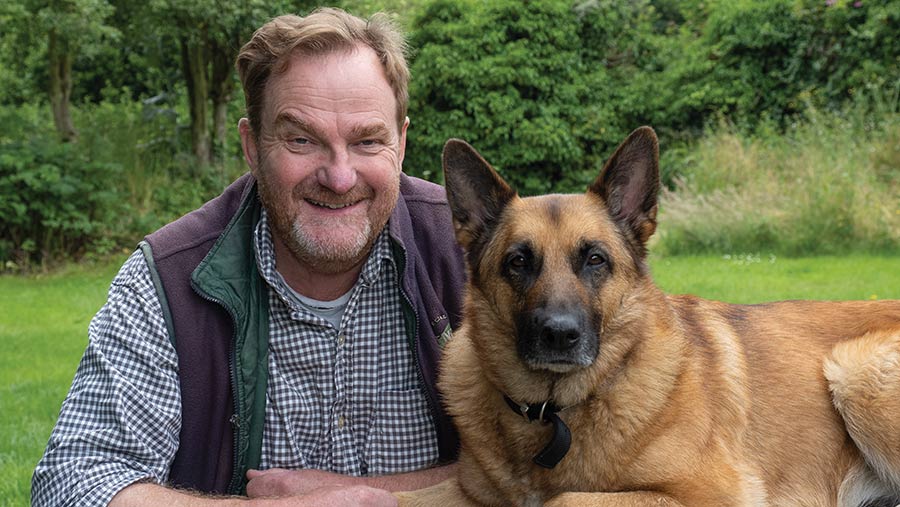Flindt on Friday: Here’s how my last ever harvest went
 © Kathy Horniblow
© Kathy Horniblow What’s that? You want another harvest review? Oh, all right. If I must. But be aware, this one is slightly special.
Let’s start with the weather, of course. We’ve never known anything like it. Twenty-six days of continuous combining, which is a first for us.
I caught sight of myself in the Terracan mirror one morning after doing a refuel and had a bit of a shock – and had to take my first ever “selfie” (I think that’s what young people call it).
When the rain finally did come, it only lasted a couple of days, and we all had a bit of a welcome break.
See also: Harvest 2022: The 5 top-yielding winter wheat varieties map

© Charlie Flindt
The ground was hard, which meant we could do corn cart over stubbles back to the barns with a clear conscience – very handy as the sunken farm lanes get busier and busier every year; throw in a couple of local building and civil engineering projects in full flow through the summer, and being able to avoid the lanes altogether was a real bonus.
Everyone remained smiling and cheerful, even in the record heat. Trinity Grain kept the lorries coming (just) and we only had to stop early once, but that wasn’t their fault.
Pressure drop
I finally worked out how to drive the Tucano properly, and the ride got better once the header accumulator was dropped from over 100 bar to 25 bar.
We had a slight brown-trouser moment with the diesel particulate filter, but it did mean the Claas finally earned a name: Keith, as in Keith Flint, as in, ahem, “I’m the firestarter”.
Everything else ran very smoothly, as long as we kept blowing rads out. There wasn’t a single puncture – amazing, bearing in mind the dry, rock-hard ground. No flat tyres, no oil leaks, no emergency parts runs. Quite bizarre.
But what about the crops themselves? Well, things started moderately, peaked, and then went downhill again. (Bear in mind that the following yields are “dry and clean” weights from Trinity Grain, not “pub” or “regen” weights).
The winter barley was mediocre; half of it was drilled very late, the other half went in in better time but in many places lost the battle against blackgrass (on the good land) and slugs (on the heavy land). It limped to a weary 2.31t/acre.
Hurrah for first wheat after beans, though. Good old Gleam, coming in at an all-time record 4.11t/acre. Inevitably, protein dilution messed up the quality – annoying, especially as I hadn’t done a knee-jerk fertiliser cut-back.
We hurried into the second wheat, hoping for more of the same, and it was “as you were”. I’m not going to embarrass myself further with the final yield, but it was somewhat less than 2t/acre, with just the odd load promoted beyond the feed bin to save a bit of face.
After that debacle, the spring barley was a rip-roaring success at 2.1t/acre – and every lorry bar one went for top grade Planet. And if we are to believe what we read in the business pages, the premium should make up for any yield shortfall.
Doing a deal
All in all, if I’d sat down with the Good Lord for a Biblical Hobnob and the pre-harvest haggle, and He’d said, “I’ll knock 12% off what you’ve submitted to Trinity Grain in exchange for trouble-free dry days, dry corn, fabulous straw sales, low diesel and drying costs,” I’d have bitten His hand off.
And if He’d said, “Are you sure? Are you happy with that? After all, it’s your last ever harvest,” I would have told Him that yes, I am happy. That’s as good a way as ever to finish my arable farming career.

